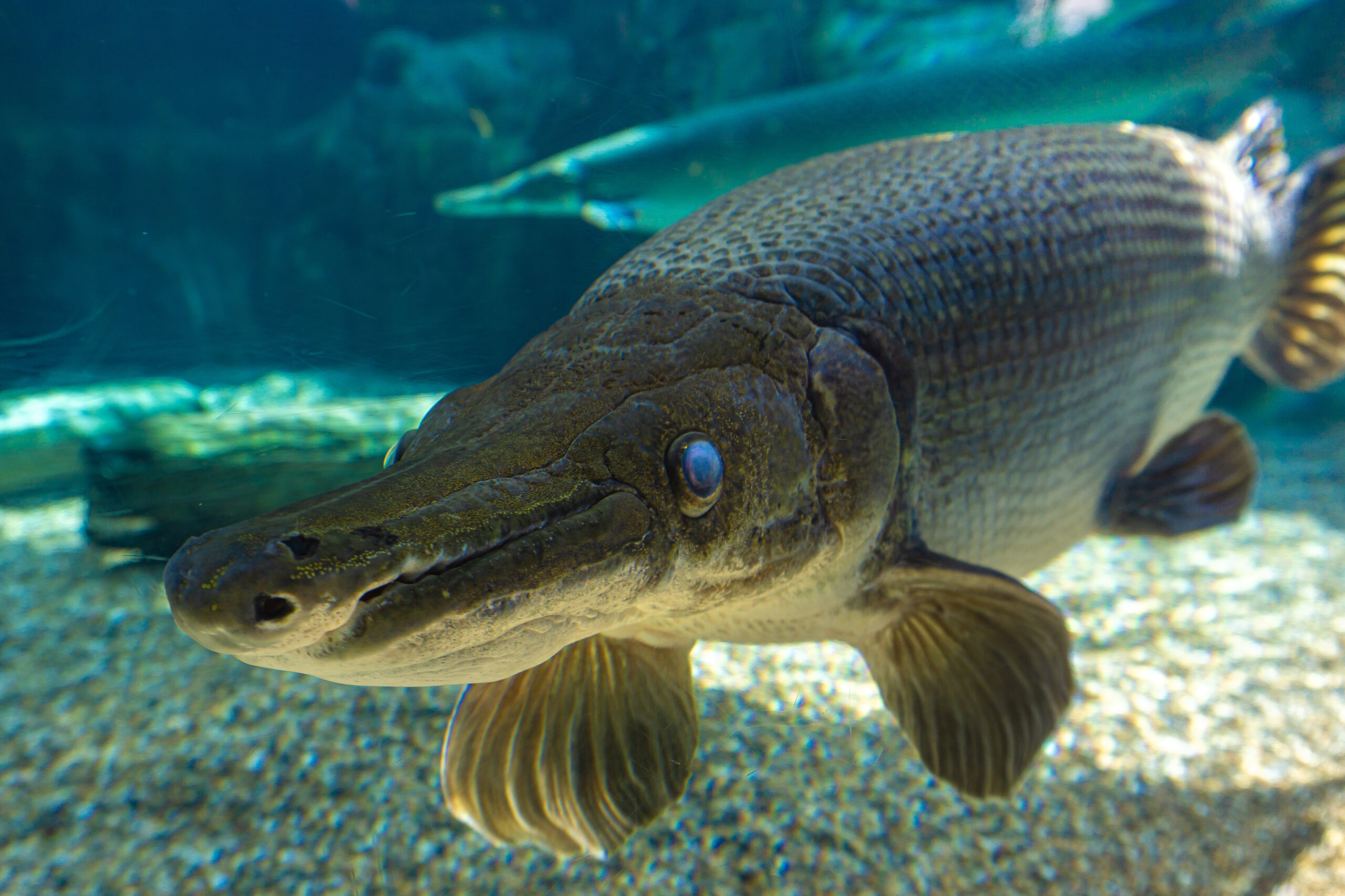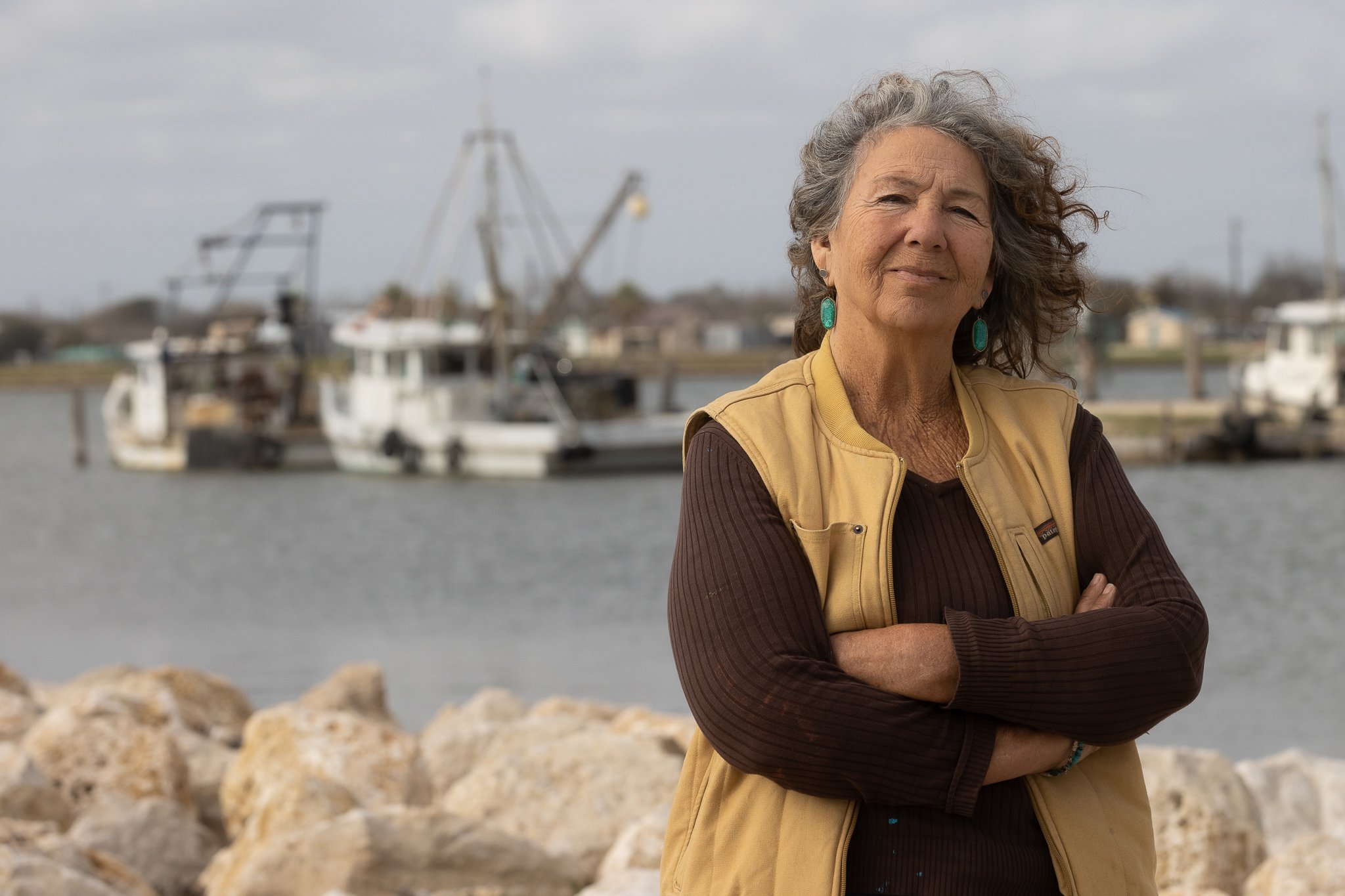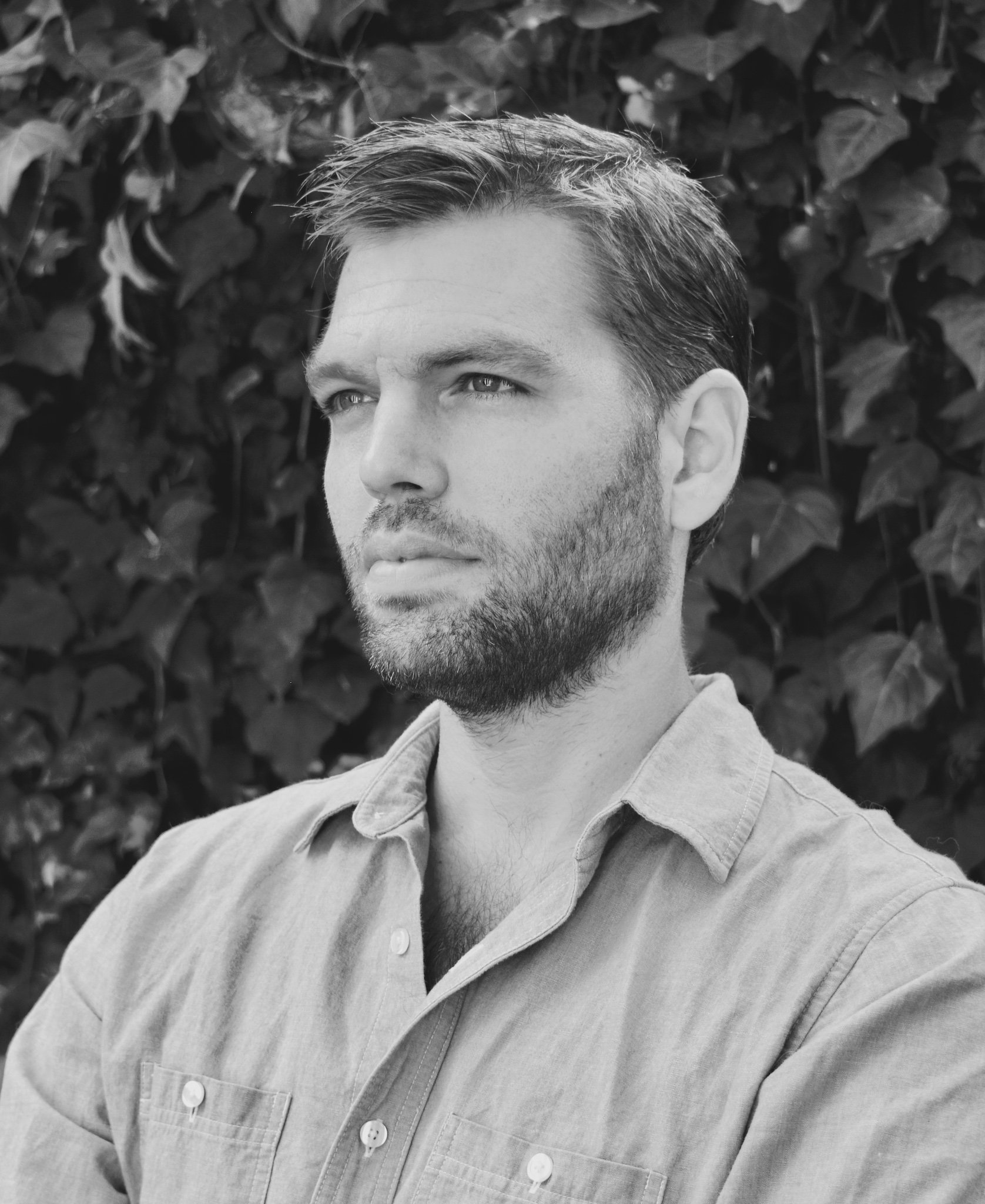
Life in the Dead Zone
An ailing Texas fishing industry contends with the threat of hypoxia in the Gulf.

A version of this story ran in the February 2014 issue.
The C. Lorraine lets out a throaty growl before she gracefully maneuvers past docked boats in an otherwise silent estuary, toward the open ocean. Mauricio Blanco, a good-looking, 40-something father of four and the C. Lorraine’s captain, has been up since 4 a.m. This is his second time on the water today. Behind him, in the distance, the sky above Port O’Connor, an unincorporated community in Calhoun County about an hour southeast of Victoria, has turned an ominous black. Later on, the storm—a nasty “norther”—will descend on this tiny port, but by then Blanco will have already secured his boat for the night and be on his way home. For now, a wooden crucifix, stuck to the wall of his cabin, is the only thing he needs to know he’ll be okay.
Blanco has been a fisherman for 23 years. Half the year—between mid-May and mid-October—he hauls oysters from the reefs offshore. The other half he’s trawling for shrimp, to sell to fishermen for live bait. There used to be about 300 boats lined up next to the C. Lorraine here in Port O’Connor. Today there are about 10. Blanco says unless you own your boat, which he now does, the business has just become too expensive.
Though the cost of fuel has gone up a lot over the years, 2013 has been successful so far for Blanco. On a fairly good day he can make $1,000 gross. After fuel, other expenses and paying 20 percent each to his two crew members, he’s probably left with about $500. On a really good day he can make $4,000 before expenses. But that wasn’t the case when he fished off the coast of Louisiana a few years back. For two years, Blanco cast his nets in the waters there and caught practically nothing. That was, he says, due to a phenomenon known as the Dead Zone—oxygen-depleted waters largely void of life.
Though it fluctuates (largely due to rainfall), the Dead Zone has doubled in size since the late 1980s, encroaching into Texas waters and devastating those who make their living from the ocean.
The Dead Zone in the Gulf of Mexico is caused by fertilizer run-off from farms in the Midwest sluicing into the Mississippi River and onward to the Gulf. Because it’s rich in nutrients designed to make plants grow, this fertilizer turbo-boosts the microscopic plants in the seawater, and small marine animals feed on this vegetation. That marine life inevitably produces a lot of fecal matter and these pellets drop to the ocean floor, along with dead animals and plants, which are then consumed by microbes. Those microbes require oxygen, and there’s the rub. What, in theory, is initially life-giving, ultimately ends up causing hypoxia—areas of oxygen depletion that have become known as the Dead Zone.
Last summer a Texas A&M University team surveyed the Texas-Louisiana coast and found large swathes of hypoxia, covering around 3,100 square miles—about the size of Delaware and Rhode Island combined. The largest was off the coast of Louisiana, but the team also found “significant amounts” near Galveston and elsewhere off the southeast Texas coast.
For hypoxia to occur, fresh and salt water can’t mix. In the Gulf, because fresh water from the Mississippi is lighter than seawater, it gushes into the ocean, forming a lens over the brine, and when the oxygen gets used up, it can’t be replenished. Until, that is, you get big, dramatic winter storms blowing in —or better still, hurricanes—that serve as a gigantic natural whisk, churning the waters and breaking up the hypoxia. The ocean can breathe again, but it’s a temporary relief. Come Spring, the hypoxia re-establishes itself, and according to Peter Thomas, a biologist at the University of Texas’ Marine Science Institute in Port Aransas, in years with large rainfall, that hypoxic area dramatically increases in size.
The Dead Zone has grown from about three to four thousand square kilometers in the early 1950s to up to 22,000 square kilometers today. “It’s actually got larger all over the world, particularly in the developed world,” Thomas says from his office overlooking the Gulf, just a stone’s throw from the beach in Port Aransas. “It’s increased into 300 sites around the globe, and (on average) by about three-fold over the last 15 or 20 years.”
The reason for the dramatic increase, he says, is the introduction of intense agricultural practices throughout the world that use a vast amount of fertilizer. The problem is, our most important fisheries are coastal fisheries and the agricultural run-off impacts precisely these fishing grounds. When you get vast areas of low oxygen like this, some marine life will move elsewhere because they can’t tolerate it. Those that stay have to make adjustments. This is the area where Thomas and his colleagues in Texas have focused their research, and the results are disturbing: In order to conserve energy in these de-oxygenated waters, the marine life they’ve studied simply stop reproducing. Ultimately, that’s going to mean fewer fish and shrimp, which could spell disaster for the fishing industry and our food supply.
Thomas likens this reaction to how our own bodies react when we run long distances: Our muscles start aching, we build up lactic acid, and we use glucose less efficiently than we would if we had plenty of oxygen. To limit their use of energy, some of these marine animals go into an almost hibernation-like state, Thomas says. “The way many of these marine organisms survive as a population is to have millions of eggs. The tuna fish, for example, will make 50 million. But making millions of eggs is hugely energy dependent and so animals that face severe stress through things like hypoxia stop reproduction.”
In croaker, the fish species Thomas studied, the female fish even become masculinized, with sperm appearing in their ovaries. “These fish think, if they survive till next year, they’ll reproduce in another year. The problem is, the hypoxia occurs every year,” he says.
Long-term, Thomas says, hypoxia will cause a population decline. His team worked with Dr. Kenneth Rose, a scientist at Louisiana State University, who produced a 100-year model of what the croaker population would do. “And he showed there will be a quite considerable decline, even by conservative estimates,” Thomas says.
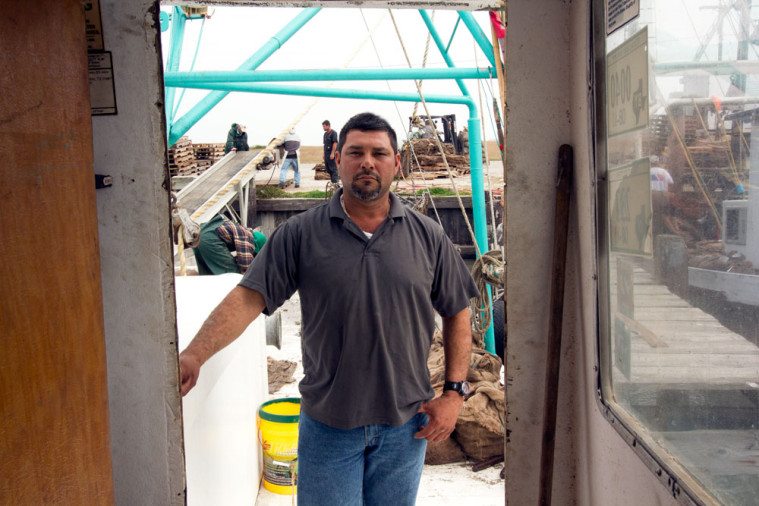
Two porpoises breach from the water off the rain-lashed harbor of Port O’Connor as the C. Lorraine approaches its berth. A pelican watches from a wooden pylon. Right now, Mauricio Blanco says the live bait shrimp he catches fetch a dollar per pound and he must catch 100 pounds to make enough to pay for the fuel he’ll use. In previous years the shrimp have sold for as little as 25 cents per pound.
And he can’t survive simply trawling for live bait, which is why he harvests oysters too. He used to be able to haul 150 sacks of oysters per fishing trip but three years ago the law changed in Texas and now there’s a 50-sack limit. He used to fish till late, but then they enforced a 3 p.m. curfew. Fuel was cheaper a few years back too.
Blanco bought the C. Lorraine in 2011 for $90,000. The boat is now 42 years old and its single diesel engine burns about 90 gallons of fuel per day. This past July he spent $15,000 replacing the chair in the cabin, the wheel and some other things that needed attention. “It goes like it’s brand new,” he says.
But running a boat isn’t cheap, and each time Blanco fires up that engine, a question haunts him: What if? What if he doesn’t bring back the catch he needs to sustain his business, to pay his two crew members, to support his family?
A few years back, he had to confront an epidemic of red tide in the Gulf of Mexico—a huge algae bloom that is naturally occurring but is toxic to fish and poisonous to humans if they eat shellfish that has become contaminated. “Texas lost $88 million due to red tide,” he tells me. “That’s how the union I started was born. We now have 350 members.”
The Union of Commercial Texas Oystermen has helped unite the people making a living fishing commercially for oysters in the Gulf—and it’s helped give them a united voice, too. While there’s evidence to suggest that hypoxia doesn’t affect shellfish as much as it does fish or shrimp, Blanco says he can’t survive fishing for oysters alone.
“If hypoxia happens we’re pretty much screwed,” he says. “Where am I going to work? This is all I know. And I’m good at it.”
The good news is that the Dead Zone caused by run-off from the Mississippi doesn’t appear to be getting any larger, on average. Bob Diaz, a former professor at the Virginia Institute of Marine Science, says the hypoxic area is “maxed out.”
The bad news is that the hypoxic zone doesn’t necessarily need nutrients from the Mississippi any more to form. “If you keep overloading the system with nutrients, eventually residual amounts will be stored in the sediment,” Diaz explains. “They’re building up. And it’s a worry because the problem is still there, and there’s a lot of distress to the ecosystem.”
Diaz says due to this reservoir of nutrients that cause hypoxia, the Dead Zone is forming earlier each year and lasting longer. In addition to that, he says, Texas has its own problem: river systems flowing into the Gulf from the Lone Star State that are causing separate, smaller areas of hypoxia. And, he says, while these zones may not be increasing in size, they’re getting worse overall in terms of oxygen depletion and the length of time they last.
In 2012, Steve DiMarco, an oceanographer at Texas A&M, was the lead author of a paper that described hypoxia linked to the Brazos River. His conclusion was that the Mississippi River system was not the sole cause of hypoxia in the northern Gulf of Mexico.
“It’s kind of a race between how much is happening at the bottom and how much oxygen is coming down from the surface,” DiMarco told the Corpus Christi Caller-Times last year.
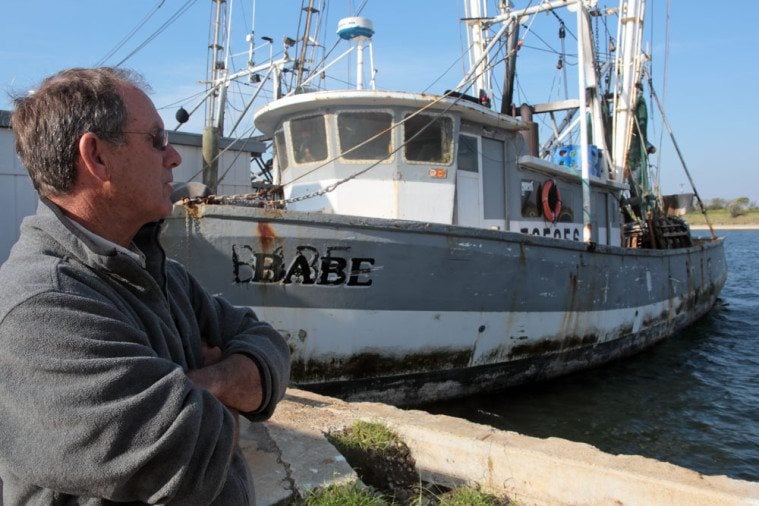
About an hour or so down the Texas coast, Grant Erickson sits behind a cluttered desk in his office on the upper floor of his shrimping business, Erickson and Jensen Seafoods, at the docks in Aransas Pass. Erickson comes from a long line of fishermen—he can trace his lineage back to the whaling fleets of the 1800s. His grandfather worked as a shrimper on Long Island, New York, before moving down the East Coast looking for a better catch. When his grandfather got to Florida in 1950, he discovered pink shrimp. “He was a pioneer of the pink-shrimp industry,” Erickson says, “finding it was a much more sustainable crop because the larger fisheries could be fished out, and he was seeing that happen.”
His granddad moved toward the Texas coast and began catching white and brown shrimp, and he passed the mantle to his son, who passed it on to Erickson. Now, Erickson spends most of the year in south Florida and four or five months in Aransas Pass for the Texas shrimp season. It’s been a while since he worked on board; today he manages his fleet of 12 boats from land and employs a crew of four on each who trawl the length of the Gulf from Florida to the Mexican border. Erickson says the Dead Zone off the coast of Louisiana means they have to make a huge jump over the mouth of the Mississippi to avoid it.
He recounts a story a friend told him: He was a shrimper, taking his boat from Florida to Texas, and in order to make the voyage profitable he decided to drag his net the whole way. “So he starts dragging right around the Mississippi River, westward. And for days he didn’t catch anything,” Erickson says. “He was amazed at the lack of life in 100 feet of water. Just nothing. At that time I just realized there is this Dead Zone out there, and it is a serious thing. It’s a no-life zone.”
Erickson says he hasn’t seen any effects of the Dead Zone in Texas yet, though he concedes he’s based pretty far south along the coast and his boats don’t go out as far as Louisiana.
There’s nothing good about the Dead Zone, he tells me. “If there’s something that’s hurting the crops of shrimp—and shrimp is an annual crop—we’d be like the parakeet in the mine.”
Texas shrimp season began on July 15th this year and lasts around 60 days. The catches are heavy toward the beginning, Erickson says, and one of his boats may haul 1,000, 2,000, even 3,000 pounds of shrimp in just one night. “But this then dwindles down as they catch the shrimp up. So right now they’re catching between 500 and 600 pounds a night.”
The crews only work during the night because shrimp are nocturnal. During the day the animals bury themselves in the sand or mud, and it’s not economically sound to burn the fuel to drag during daylight hours. That’s when the crews anchor and catch up on sleep before the next night’s work. Each boat will trawl for 20 or 30 days at a time, freezing the shrimp on board as they catch them.
As for the future, Erickson is hoping his youngest daughter, Anna, 26, will take over the business. “She’s definitely interested,” he says. “She just graduated with a business degree from a Florida university and is out getting real-world experience. It’ll be fun working with her. I say she can’t come fast enough.”
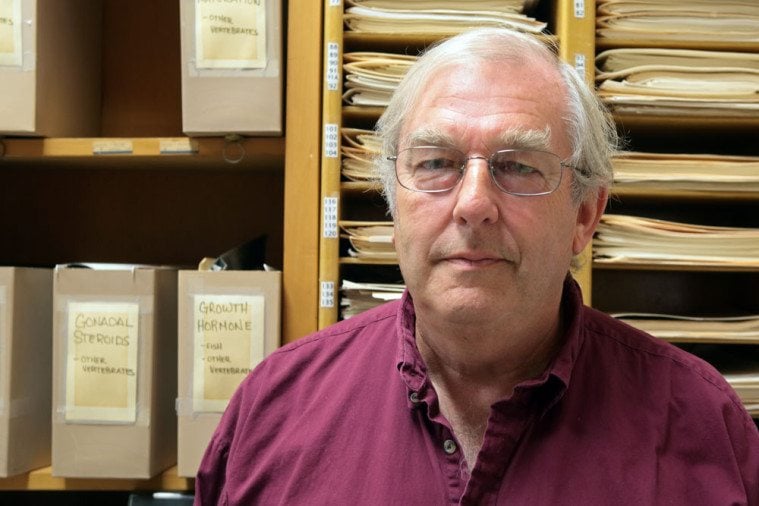
In October, the Congressional Sportsmen’s Foundation, a bipartisan group that includes nearly 300 members of the U.S. House and Senate, held a breakfast briefing in Washington, D.C., to discuss the “effects of federal ethanol policies on the health of the Gulf of Mexico.”
The topic at the top of the agenda of this rather dry sounding convocation could be what lies at the heart of the Dead Zone problem: Scientists believe the nitrogen used to fertilize corn fields in the Midwest is the single biggest cause of hypoxia in the Gulf. And they claim the federal government’s ethanol policies are exacerbating it, that a government mandate introduced six years ago that requires gasoline sold in the U.S. to include 10 percent ethanol—a move adopted to encourage the production of biofuel from corn—is outdated given the current fracking boom.
U.S. farmers planted almost 100 million acres of corn in 2012 alone, and that requires an awful lot of fertilizer, which in turn produces an awful lot of run-off into the Mississippi.
Dr. Larry McKinney, executive director of the Harte Research Institute for Gulf of Mexico Studies at Texas A&M, was at the breakfast briefing in October. “The requirement for increased percentage of ethanol in fuel made sense when we were so dependent on foreign oil. But now that we’re about to start exporting natural gas, the issue isn’t there,” he told me. “The mandate to use biofuels as a rationale to get us off foreign oil doesn’t exist. Nevertheless it’s there. And corn is so valuable they’re planting it everywhere and have to use much more fertilizer, which is pushing us to the position where the dead zones will grow even larger.”
What we’re effectively left with, McKinney says, is farmers making money off a federal policy at the expense of fishermen in the Gulf. It’s a Catch-22 that is inadvertently pitting farmers against fishermen, but it doesn’t have to be like that. As McKinney says, when farmers lose their fertilizer (i.e. when it runs off the fields into rivers instead of being retained in the soil) they’re literally flushing money down the drain. One solution could be replacing current drainage systems with better ones.
The tile drainage system employed in American agriculture since the 1930s that removes excess water from the soil subsurface is, McKinney says, “absolutely the worst for draining away nutrients.” It’s essentially a network of plumbing pipes below the surface of farmers’ fields. The alternative is a controlled drainage system that holds back the water and retains the fertilizer.
Before the breakfast, McKinney issued a statement saying that we need to “reconsider federal policies that result in such unintended consequences, or at least develop and fund federal actions to mitigate the damage.”
Following the meeting, two senators, Dianne Feinstein (D-California) and Tom Coburn (R-Oklahoma), announced plans to introduce a bipartisan bill that would strip the corn-ethanol mandate while keeping the targets for advanced biofuels intact. Feinstein pointed out that under the corn-ethanol mandate, “roughly 44 percent of U.S. corn is diverted from food to fuel, pushing up the cost of food and animal feed and damaging the environment.”
Long term, Peter Thomas of the University of Texas says hypoxia in the Gulf—and in Texas waters—will cause a population decline among the marine life. But how soon we’ll notice is more difficult to ascertain. Fish that live in unaffected areas produce millions of eggs which are then broadcast vast distances, including washing into hypoxic waters where they’ll hatch.
Another interesting factor to consider is that the fish Thomas and his team are studying are the survivors—those that have, for whatever reason, decided to stick around. “And if there are fewer fish, the species that are left may be at an advantage,” he says. “Their predators may be gone.”
Croakers, for example, eat small marine animals that live in the mud, and when the oxygen is low, that food source comes out of the mud and is easier to find and eat. “So in a sense, the croaker could take advantage of it.”
Thomas points out that it’s much easier to determine what happens to a population of, say, salmon in a river. You can monitor them easily. You know the size of the population, and they come in and out at the same time each year. It’s far harder when you’re dealing with marine life in the open ocean.
Meanwhile, in Port O’Connor, Mauricio Blanco has tied up the C. Lorraine and is contemplating the storm that’s about to blow in. He recalls a cold front that came in swiftly when he was out fishing in South Pass, Louisiana, five years ago. “We knew it was going to hit around midnight,” he says. “There were 70 mph winds and we fought it for an hour but had to lay down the anchor and spend the night behind an island. There were 12-foot waves and the anchor line snapped. It sounded like a shotgun going off.”
But the storms don’t faze Blanco. “I have too much salt in my blood, and I can smell it for miles,” he says. “It’s a way of life, and I’m proud to be a fisherman.”
What scares him far more for his industry is the Dead Zone—a phenomenon they can do nothing about. For now, he’ll keep setting his alarm for 4 a.m., driving to the port, and firing up the engine on the C. Lorraine. Then he’ll head out, as he always does, into the open ocean with his wooden crucifix looking over him on the wall of his cabin.
